Building a Raised Bed
Step-by-step instructions for building a raised bed for your FarmBot
Building a raised bed is the recommended method for installing a FarmBot. In these instructions we show you how to build a simple but sturdy raised bed suited for FarmBot Genesis. This design will fit into most yards, look great, and last a lifetime.
Notes from above 3D tour:
- 3 x 1.5m Recommended maximum outer dimensions of the raised bed
- Reinforced Prevent bowing of your bed and your tracks by reinforcing the bed walls every 1.5m with a 4x4 post buried in the ground.
- Hefty Heavy duty (1.5 to 4 inch) walls will last a lifetime and resist bowing under soil expansion pressures.
- Filled to the brim Fill your bed with rich, soft soil and compost. Leave out rocks and branches.
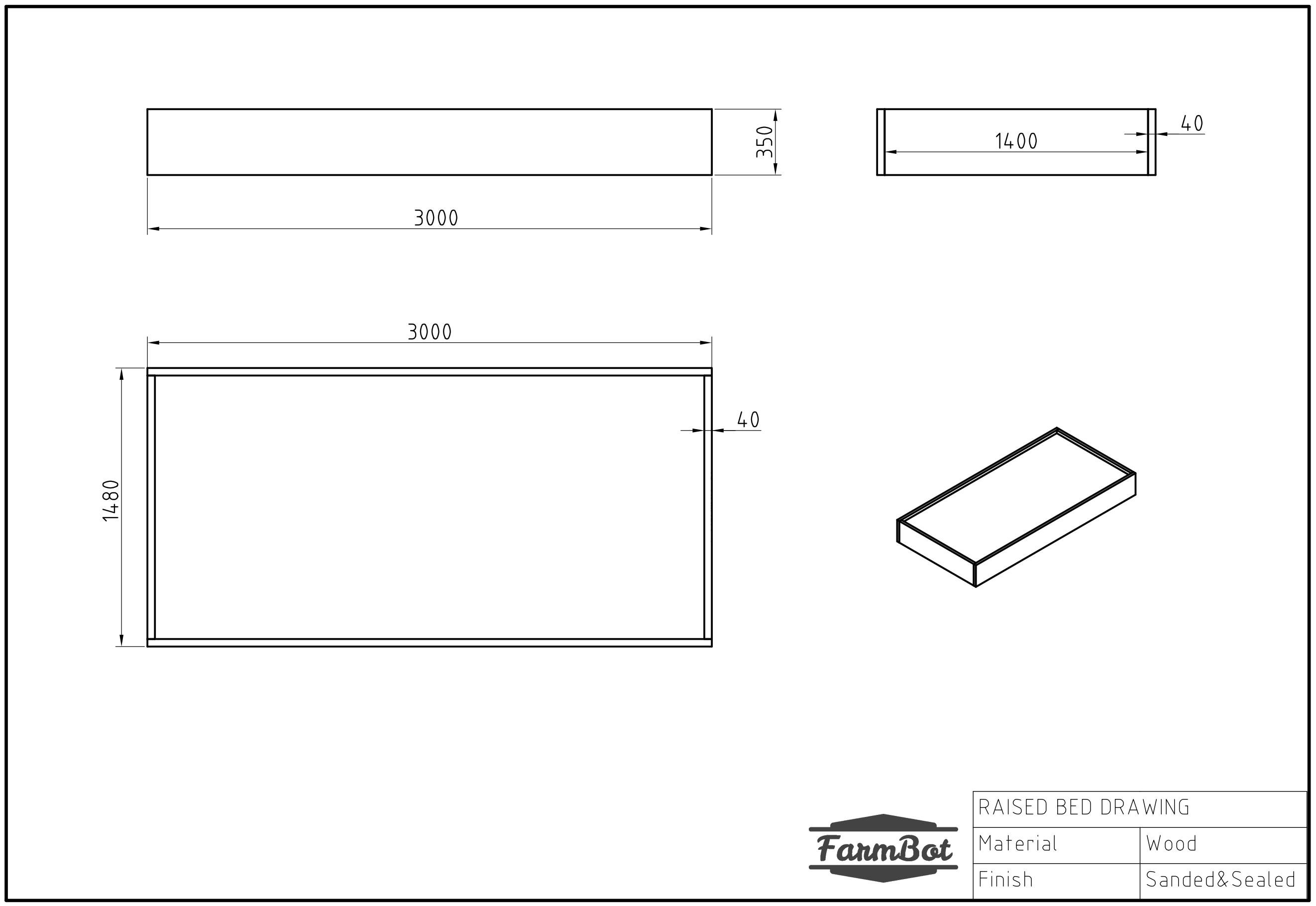
Dimensions are in mm. Dimensions are approximate. Posts and hardware not shown.
6 hours
This is the estimated time it will take to build a raised.
Step 1: Acquire Materials
- Purchase some high quality wood from your local lumber yard. Preferably you will use thicker wood (1-2 inches thick) so that it does not warp easily. This is pretty important because your tracks will need to be very straight for FarmBot to work reliably, and your tracks will be directly attached to the raised bed. When soil becomes wet and when plants grow, this can cause tremendous force on the wood walls of the bed, forcing them outwards. Thicker wood, and extra posts is preferred. In this example, I used 2x12” nominal redwood, and 4x4” nominal wood posts spaced roughly every 5 feet, or one 1.5m extrusion length.
- You’ll also need to pick up some hardware for fastening your raised bed together. I selected 3/8” x 3” lag bolts, and some rustic looking washers.
- Depending on your climate, you’ll likely want to put some type of sealer, stain, or polyurethane on your wood to protect its color and water resistance. I chose Thompson’s water sealer.
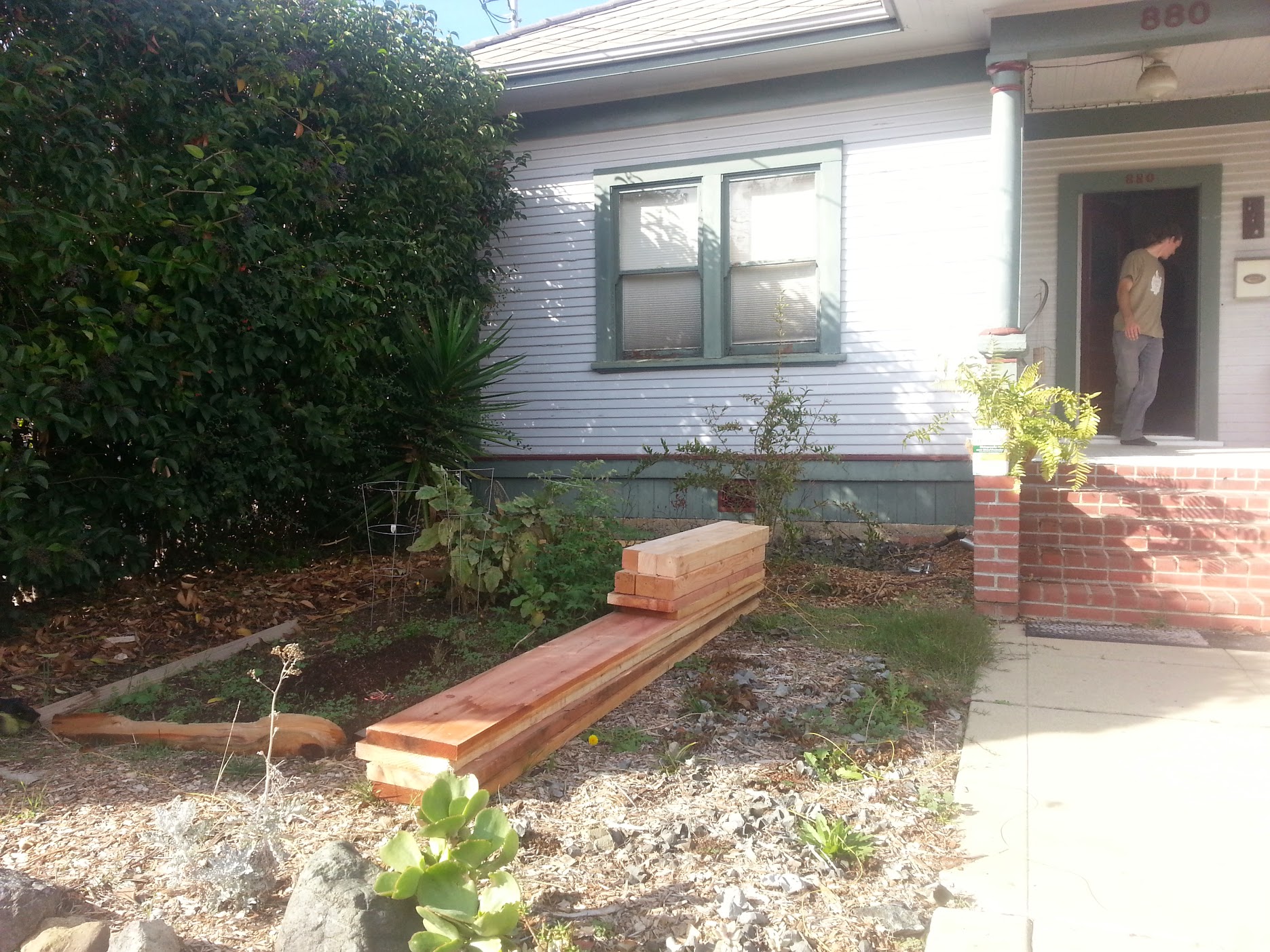
Step 2: Dig Post Holes
Setup your lumber roughly where your bed will be so that you may find out where to dig your post holes.
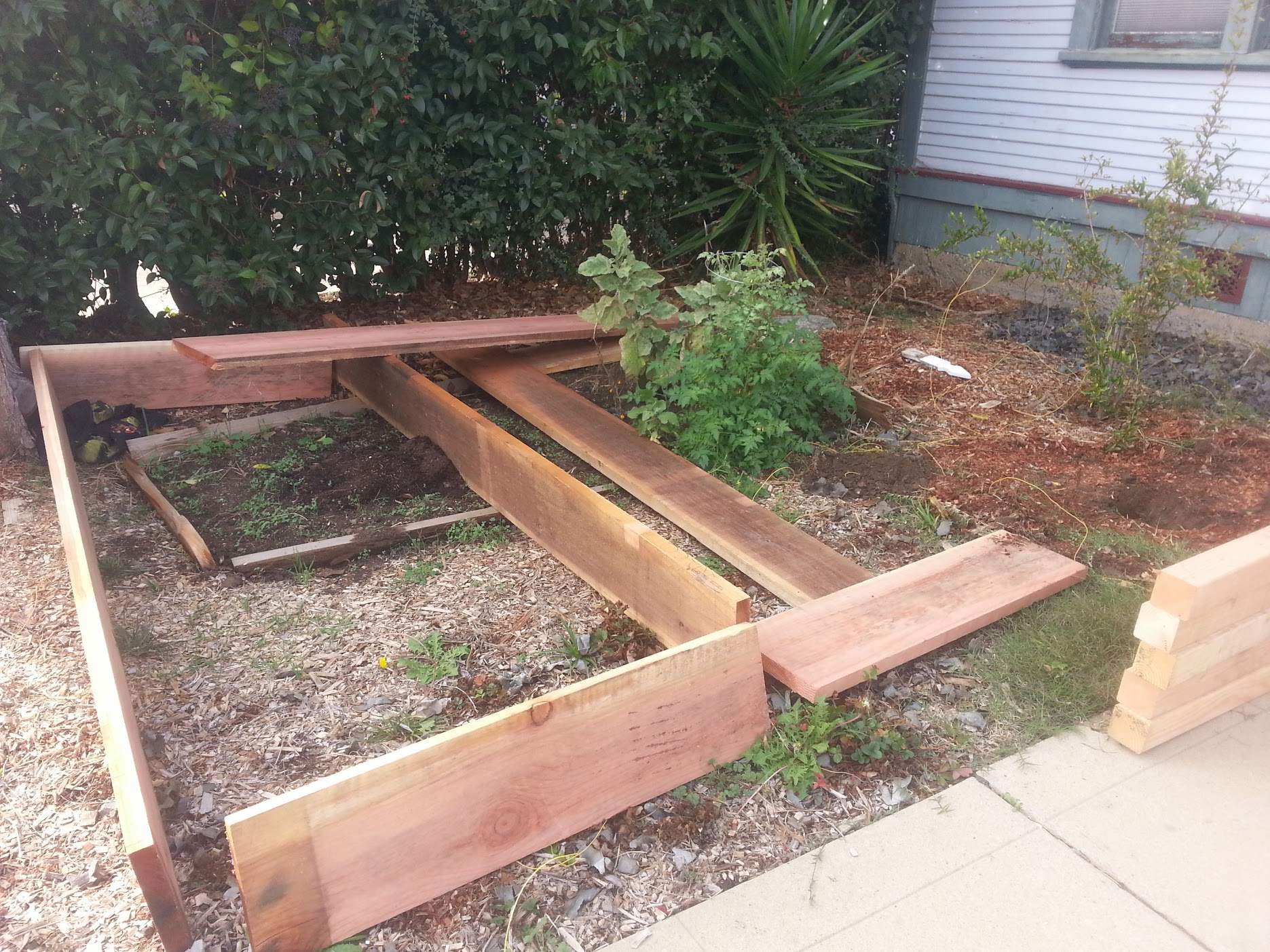
Dig your post holes. A post hole digger and pick axe can help greatly.
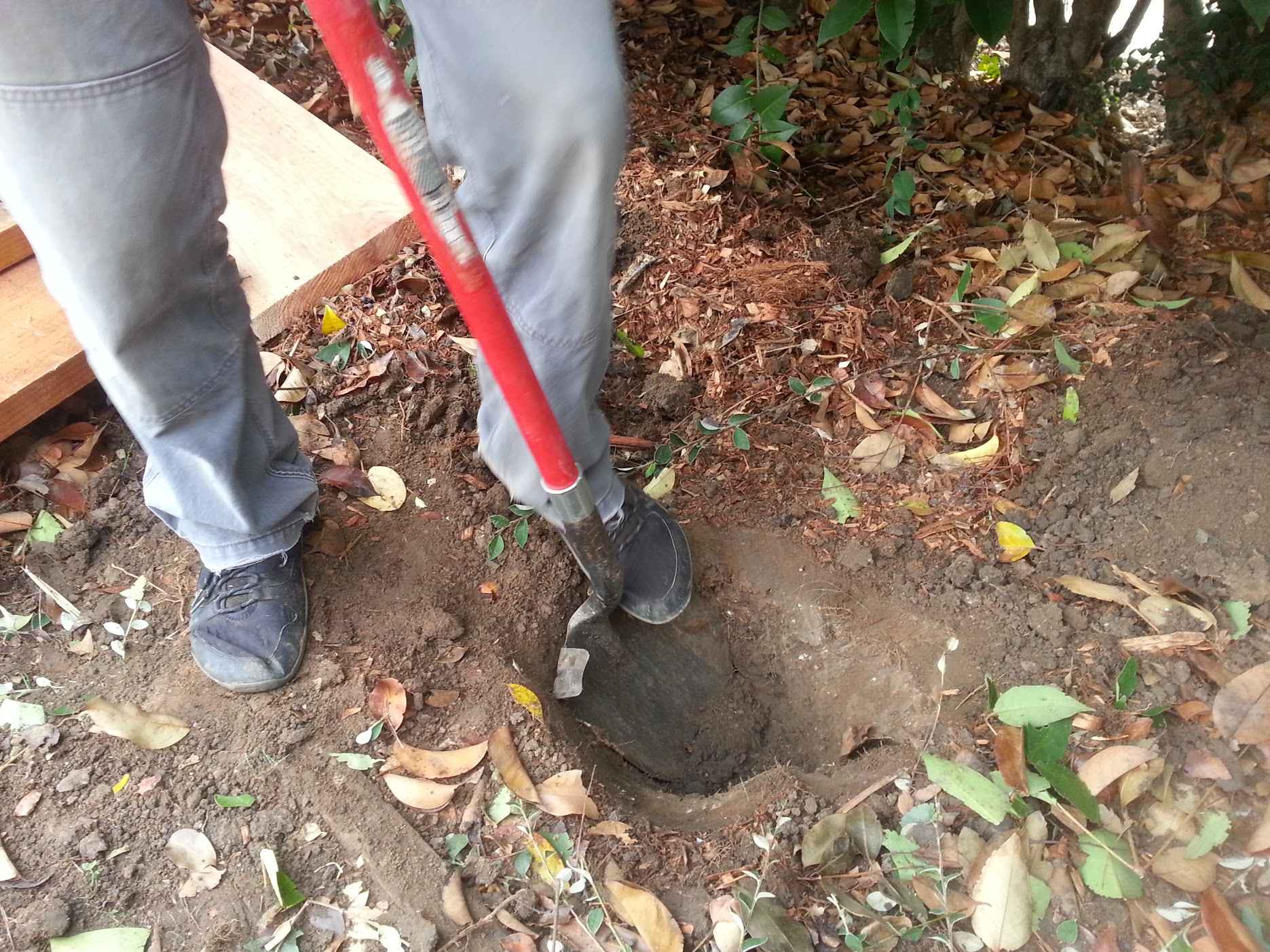
Step 3: Prepare Your Materials
Sand your wood to remove any weird markings and splinters.
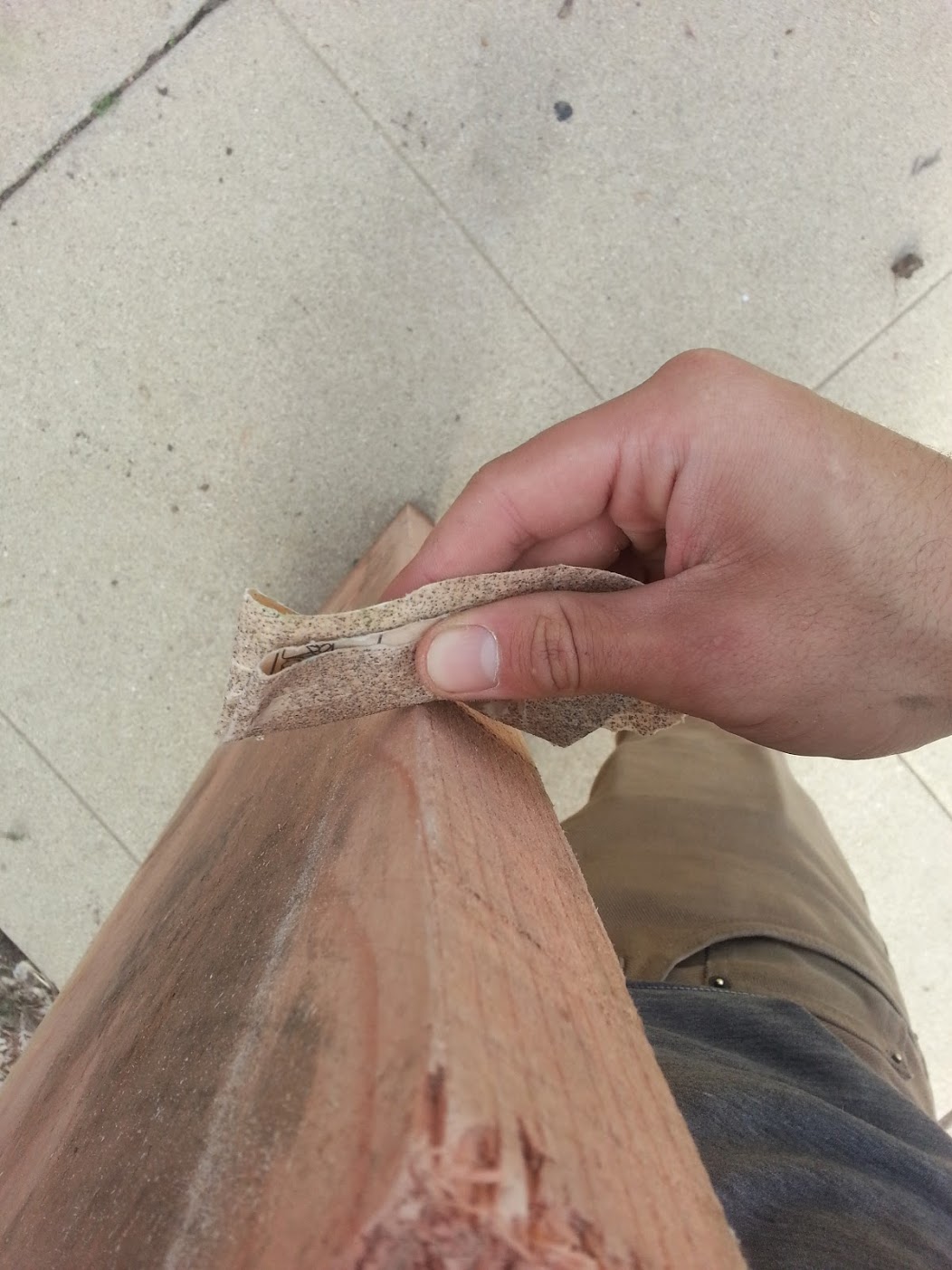
Stain your wood.

Setup your lumber upside down on a flat surface. We’ll drill holes and screw together our bed in this orientation and then flip it over and position it in our holes.
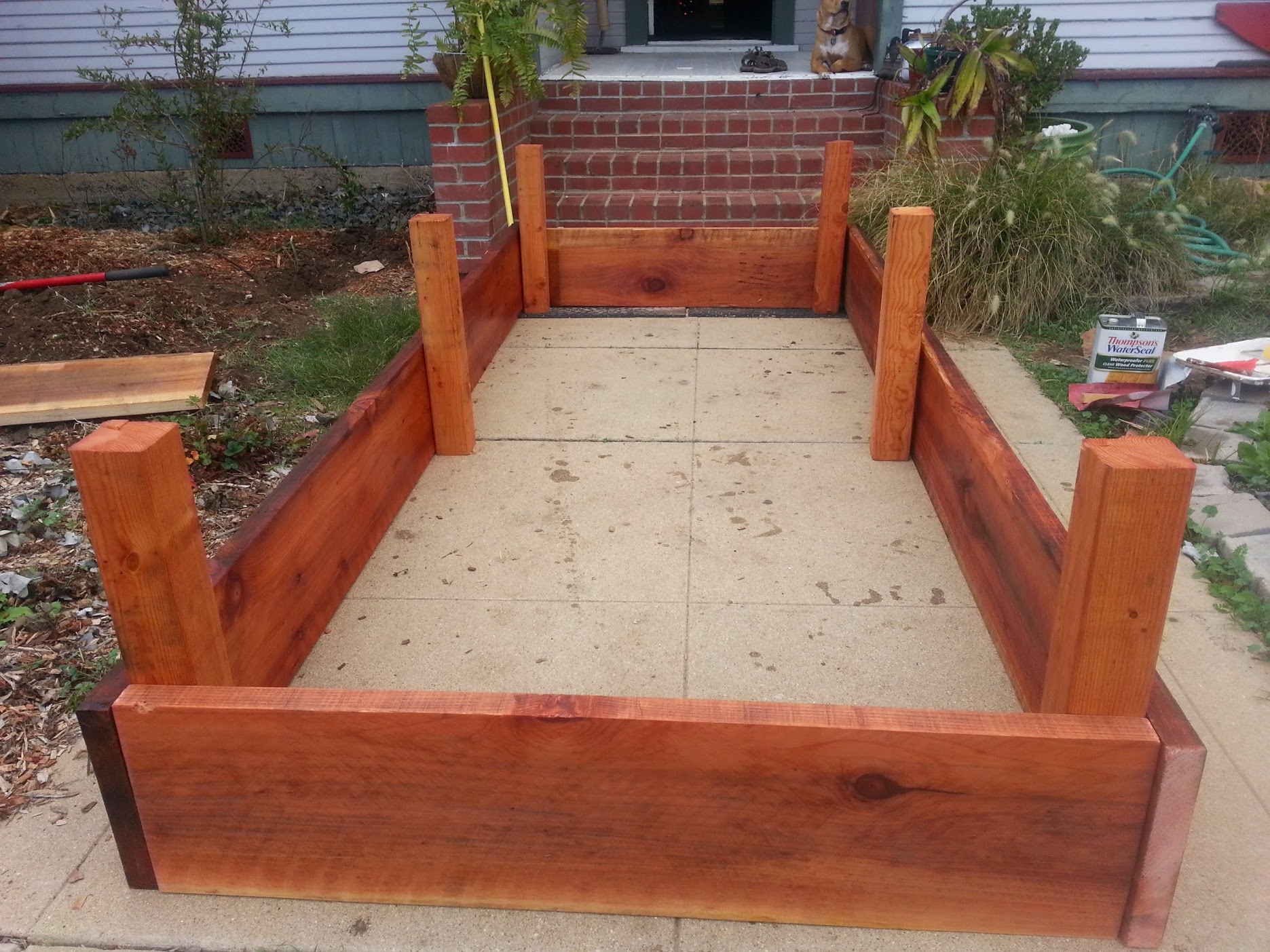
Step 4: Assemble Your Raised Bed
Measure out and mark where your posts will be. Remember this must correspond to where you dug your post holes!

Clamp your posts into place, making sure they are square with the bed sides.

Mark locations where you will drill holes and fasten your boards to your posts. I used 2 lag bolts and washers per board/post interface.
Don't let your bolts hit each other
On your corner posts, make sure to stagger your bolts slightly so that the bolts coming in from one side of the corner do not hit the bolts coming in from the other side of the corner.
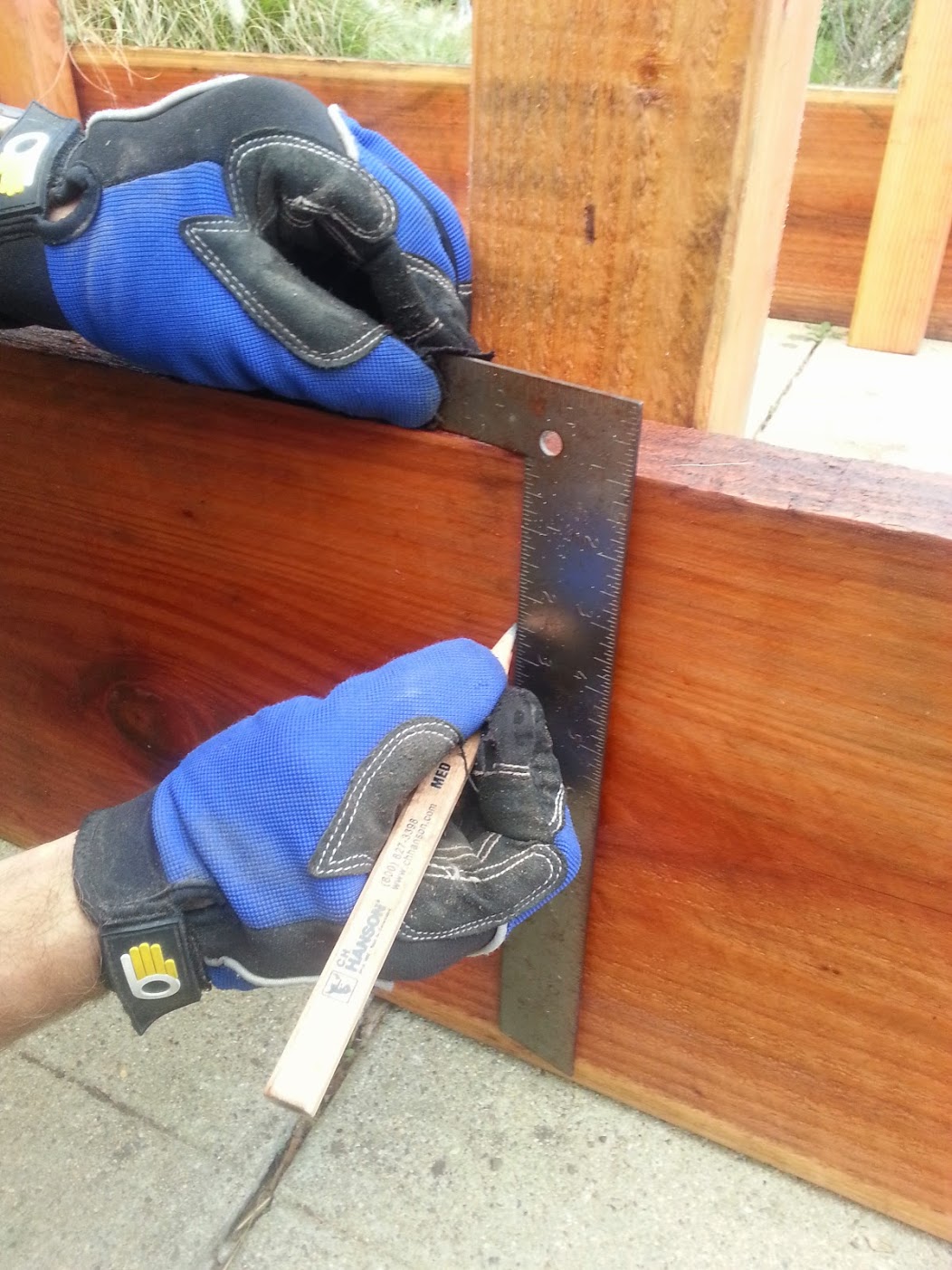
Pre-drill the holes for your lag bolts.

Use a ratcheting socket wrench to quickly screw in your lag bolts.
Style counts
If you are using fancy washers like me, orient them all in the same direction before tightening the lag bolt down. Remember, you are assembling your bed upside down, so plan for the washers to be flipped when the bed is installed.
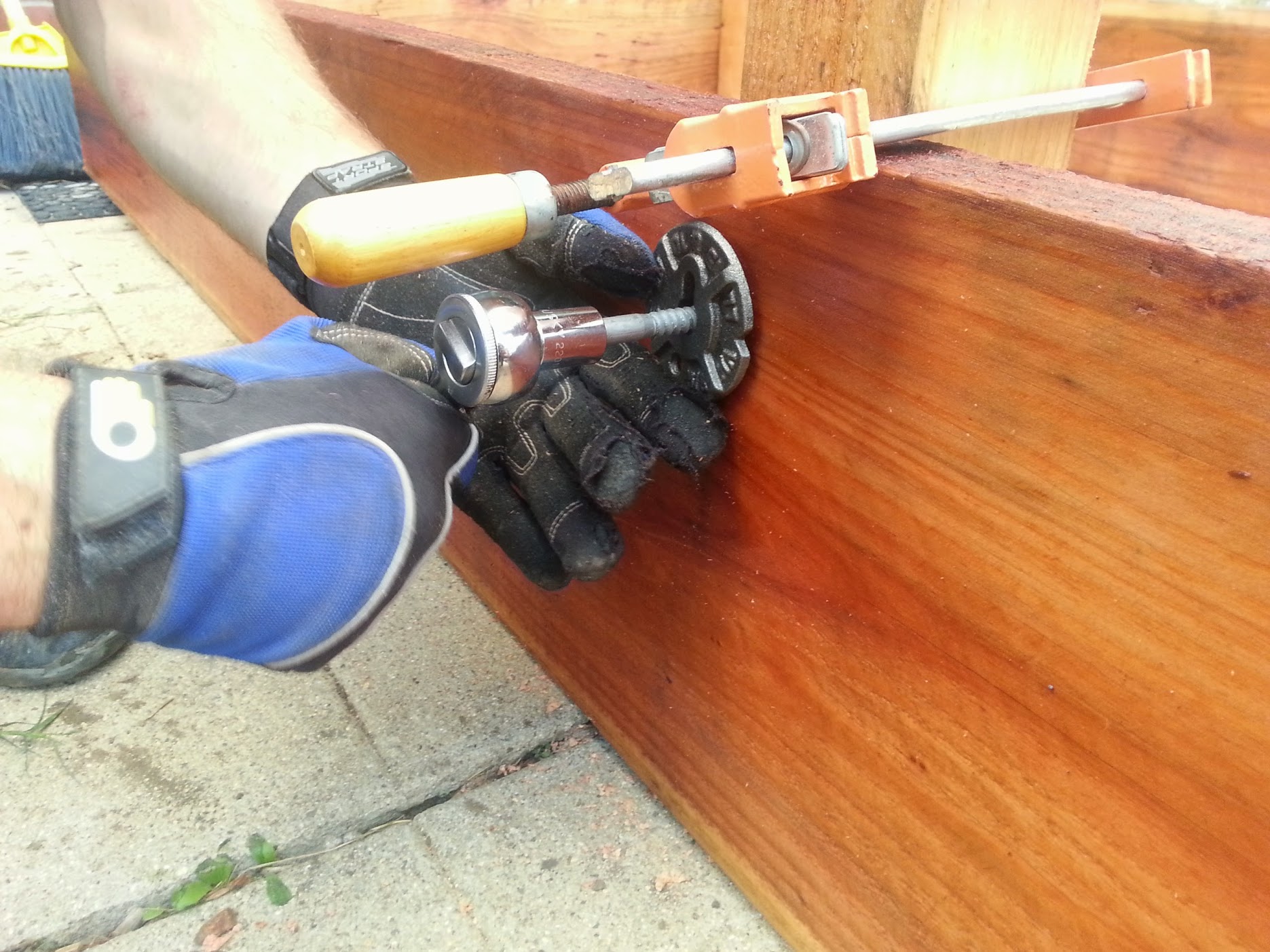
Notice how the corner bolts are staggered so that they do not hit each other, and the washers are oriented the same way.
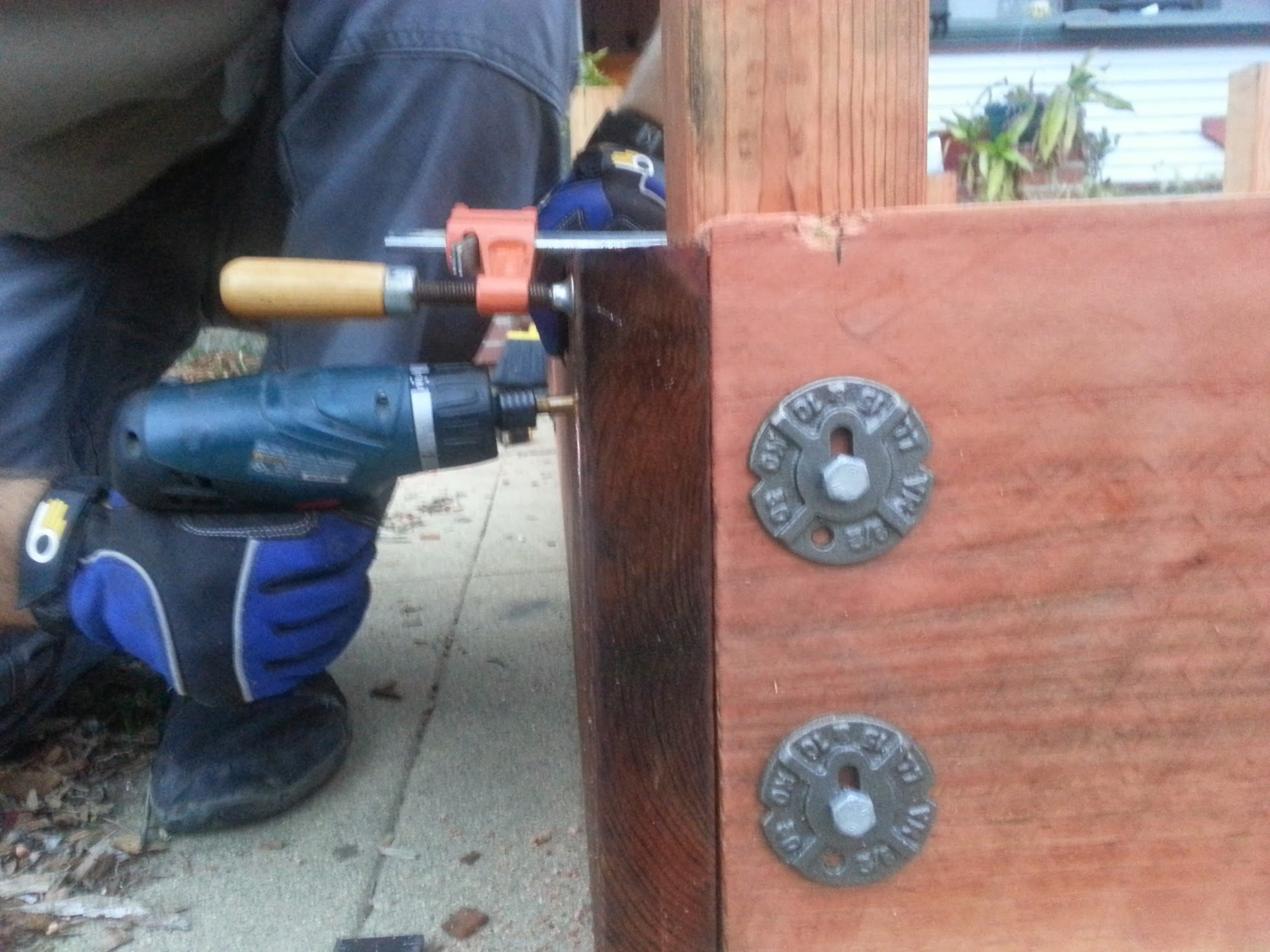
Step 5: Install Your Raised Bed
- Once your bed is assembled, flip it over and position it in your holes. You may need to pull it out and dig out some of your holes a little more. Use a level to make sure the bed is level.
- Fill it with a mix of soil and compost.
.jpg)
Infrastructure Complete!
Your raised bed is now ready for FarmBot installation!